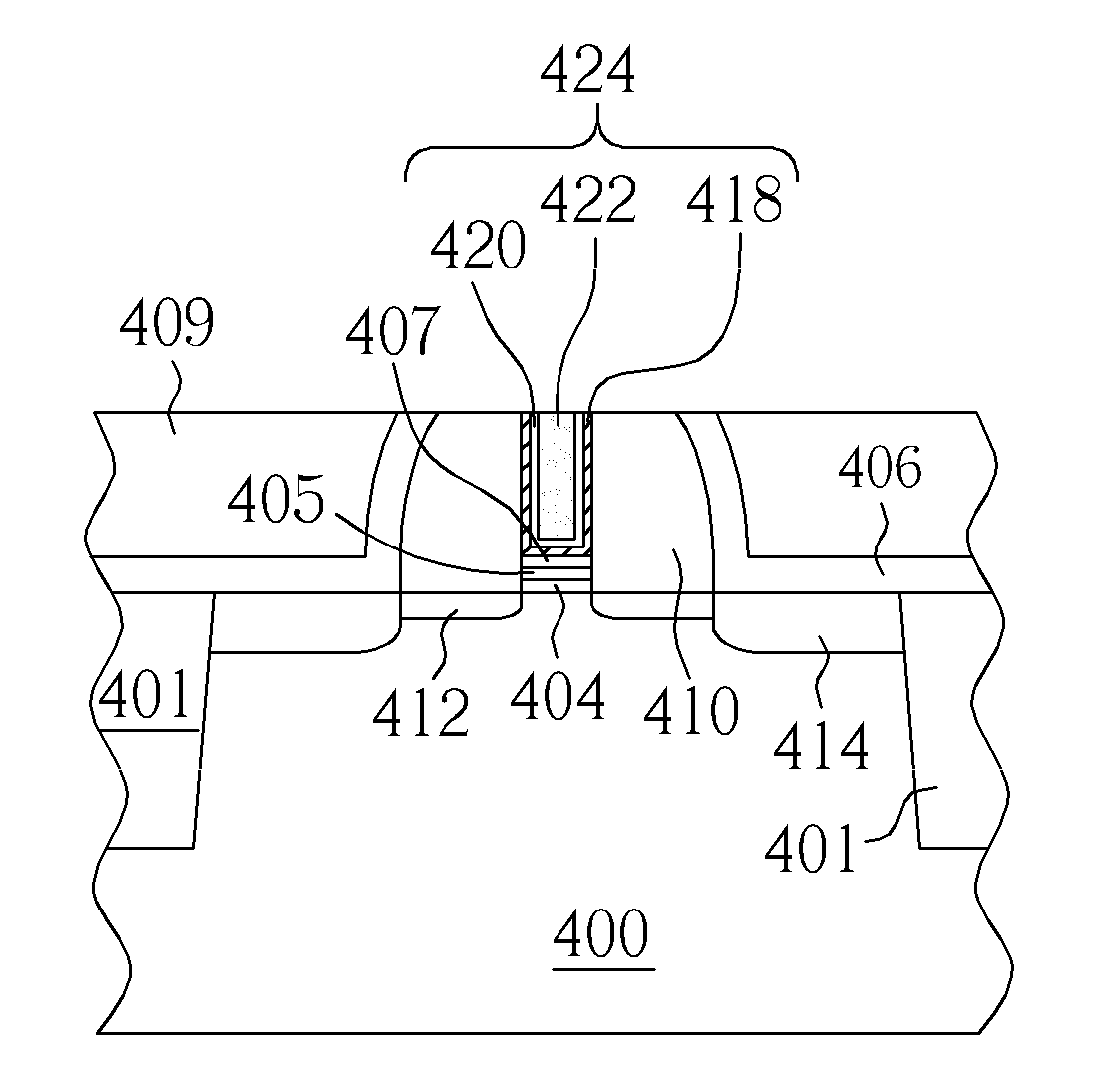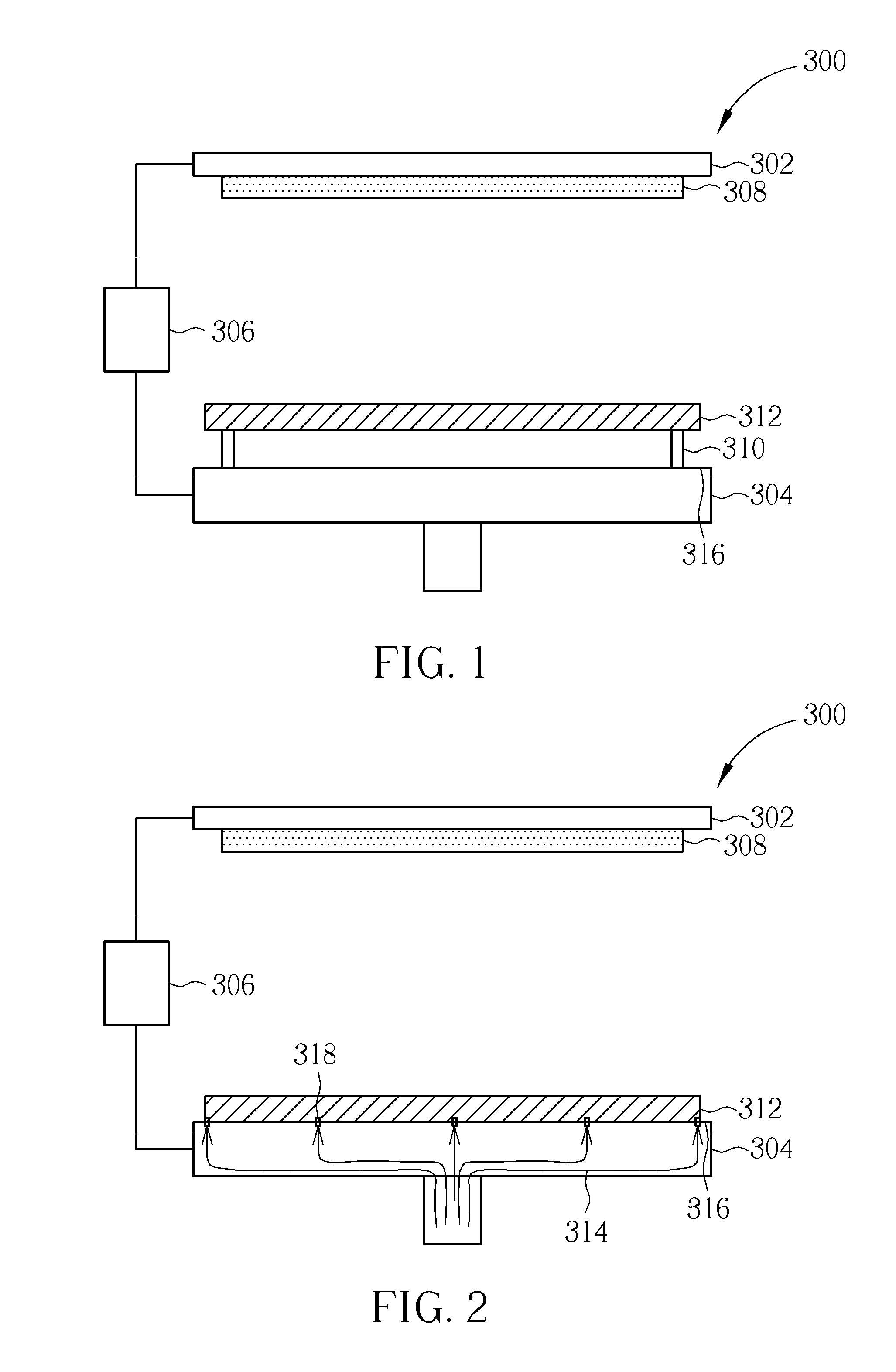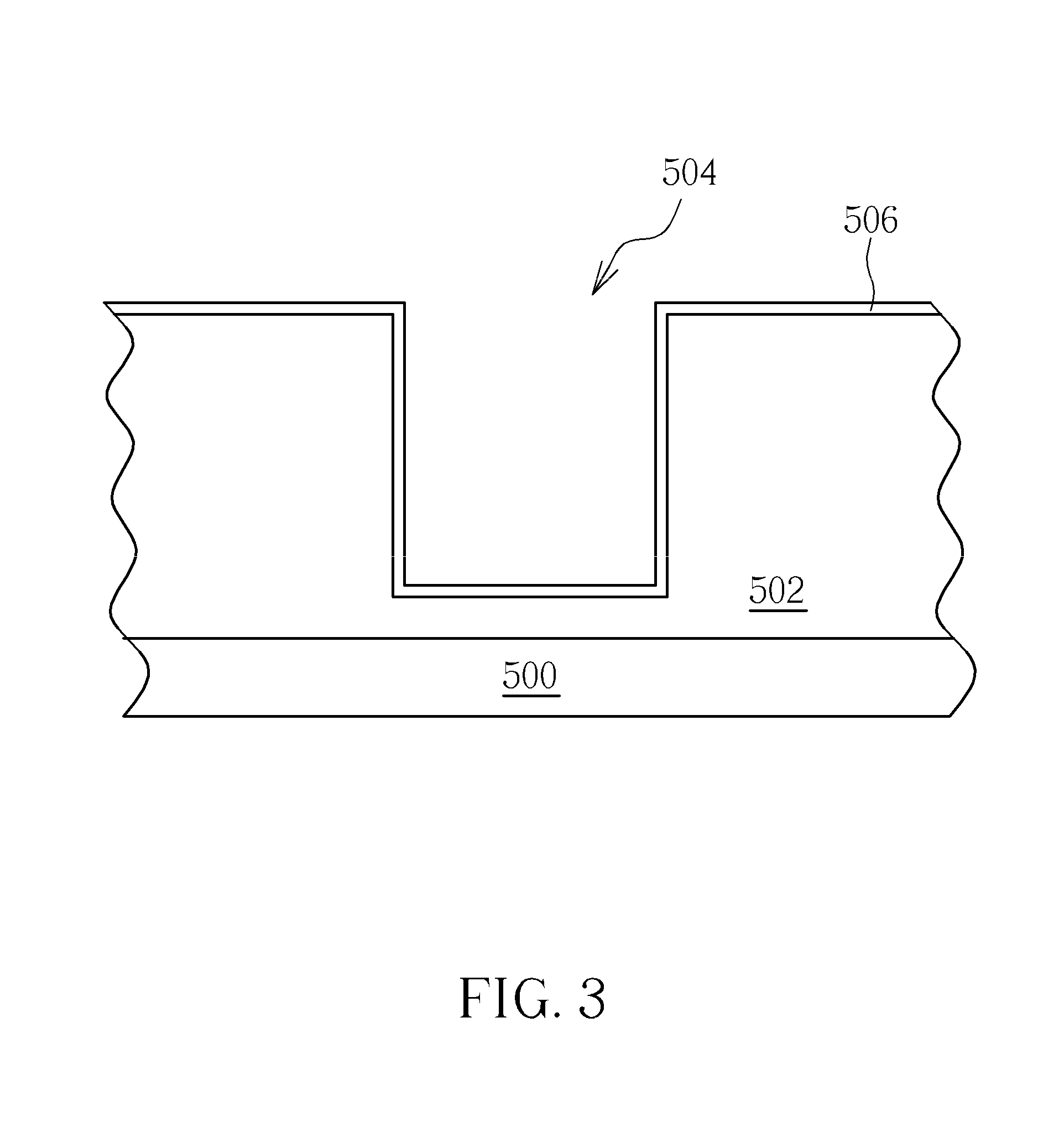Method for filling trench with metal layer and semiconductor structure formed by using the same
- Summary
- Abstract
- Description
- Claims
- Application Information
AI Technical Summary
Benefits of technology
Problems solved by technology
Method used
Image
Examples
Embodiment Construction
[0014]To provide a better understanding of the present invention, preferred embodiments will be described in detail. The preferred embodiments of the present invention are illustrated in the accompanying drawings with numbered elements.
[0015]The present invention provides a method for filling a trench with a metal layer, in which at least two deposition processes are performed. By adjusting the temperature, the supplement of heat transferring gas, and the power supply during the deposition, the metal layer can obtain a better gap filling ability.
[0016]Please refer to FIG. 1 and FIG. 2, which illustrate schematic diagrams of the deposition apparatus according to the present invention. As shown in FIG. 1, the deposition apparatus 300 in the present invention includes a cathode 302 and an anode 304, which are connected to a bias voltage unit 306. The bas voltage unit 306 is able to provide sufficient voltage for the cathode 302 and the anode 304 during the deposition process. A target ...
PUM
 Login to View More
Login to View More Abstract
Description
Claims
Application Information
 Login to View More
Login to View More - R&D
- Intellectual Property
- Life Sciences
- Materials
- Tech Scout
- Unparalleled Data Quality
- Higher Quality Content
- 60% Fewer Hallucinations
Browse by: Latest US Patents, China's latest patents, Technical Efficacy Thesaurus, Application Domain, Technology Topic, Popular Technical Reports.
© 2025 PatSnap. All rights reserved.Legal|Privacy policy|Modern Slavery Act Transparency Statement|Sitemap|About US| Contact US: help@patsnap.com



